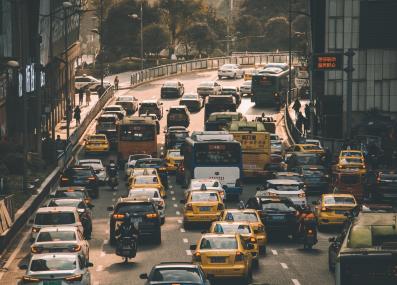Have a question?
Why don't we just plant a lot of trees?
Forests are a crucial line of defense against climate change. But trees can’t absorb enough CO2 to stop climate change on their own, no matter how many we plant.
September 22, 2020
It’s well understood that the carbon dioxide (CO2) we’re emitting into the atmosphere is causing the planet to warm. We also know that trees absorb CO2. So why not plant enough trees to take back all the CO2 we’re dishing out? Unfortunately, “while the idea sounds nice and definitely helps to some extent, we will never be able to counterbalance the amount of fossil fuels we burn by only growing trees,” says Charles Harvey, MIT Professor of Civil and Environmental Engineering, who specializes in environmental management.
As trees grow, they take in CO2 from the air and incorporate the carbon into their leaves, trunks, and roots, as well as the soil under them. The soil carbon remains even after the trees themselves die. So it makes sense to plant trees to reduce the CO2 in the atmosphere. Several scientific papers have supported mass tree-planting as a way to store more carbon in soil, otherwise known as carbon sequestration. Recently, some have taken this logic to an extreme: a bill titled the Trillion Trees Act introduced in the U.S. Congress aims to plant one trillion trees by 2050. But “there are several issues with this bill, and nearly every single environmental organization in the U.S. co-signed a letter of opposition,” says Harvey. “The main issue is that this bill distracts from needed reductions in fossil fuel emissions.”
If we think of planting trees as a stand-alone action to fight climate change, we will run into some hard limits on how much CO2 they can store. “The process of growing trees to store carbon isn’t as straightforward as ‘take in carbon, export oxygen,’” says Harvey. “Forests have metabolisms just like us, and as they approach maturity, forests reach an equilibrium where they are carbon neutral.” In other words, trees are not simply a sink of carbon from the atmosphere. In mature forests, the uptake of CO2 by photosynthesis is balanced by the release of CO2 back to the atmosphere, through decay of wood and leaves, consumption by insects and animals, and respiration within the trees themselves.
The benefits of planting trees also depend on what we do with them. The Trillion Trees Act, for example, “would open up all sorts of forests to logging to turn the new trees into paper and wood and would not consider changes to soil carbon,” explains Harvey. And while some carbon can be stored long-term in wood products,1 harvesting trees from a forest without thoughtful management can actually decrease the carbon stored in the forest.
Instead of planting more trees, says Harvey, we should focus our efforts on stopping their destruction. Older forests with many species of trees do the best job of storing carbon. Peat forests, a type of forest that Harvey researches, build up pure organic carbon, which keeps a lot of CO2 out of the atmosphere. However, these forests have been destroyed all across Southeast Asia, releasing all of this carbon.
“What individuals can do today to help prevent deforestation,” Harvey says, “is to vote and shift who is currently making the decisions at the federal and state level.”
Submit your own question to Ask MIT Climate
1 National Council for Air and Stream Improvement, "Fact Sheet: Carbon Stored in Wood and Paper Products."







